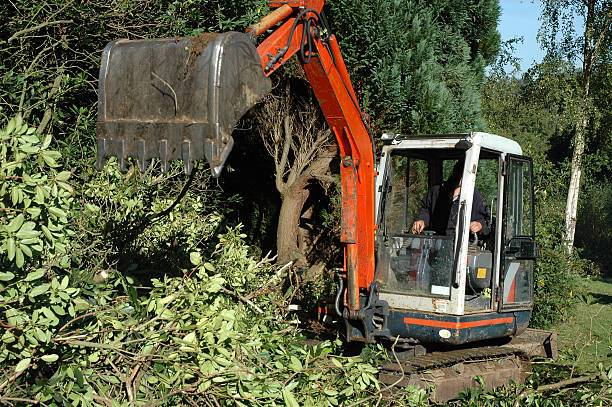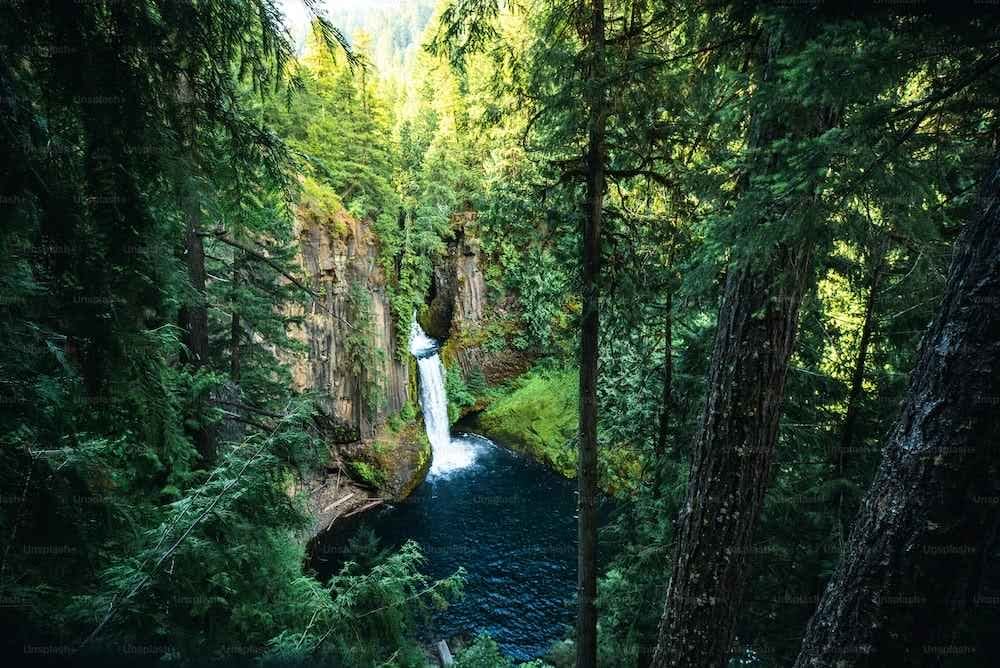
Vegetation Clearing
Keystone Industries offers top-notch vegetation clearing services that cater to your land management needs. Our skilled team utilizes state-of-the-art equipment and environmentally friendly techniques to clear overgrown vegetation, ensuring your property remains safe and visually appealing. Whether it’s for residential, commercial, or industrial spaces, our expert approach focuses on precision and efficiency. Count on us to transform your landscape into a well-maintained and attractive area. Get in touch for professional vegetation clearing solutions tailored to your requirements.
Vegetation clearing refers to the process of removing unwanted vegetation from a piece of land. This can involve the removal of trees, shrubs, and other plants to clear an area for various purposes. Vegetation clearing is an important aspect of land management and development, as it allows for the creation of infrastructure, the prevention of fires, and the promotion of agricultural activities. Check out all Land Clearing services
What is Vegetation Clearing and Why is it Important?
Definition of Vegetation Clearing
Vegetation clearing is the deliberate removal of plant life from a designated area of land. This process is done to create open spaces or clear pathways for different purposes. It involves the removal of trees, shrubs, grass, and any other vegetation that may be present in the area.
Importance of Vegetation Clearing
Vegetation clearing plays a vital role in various industries and sectors. It is important for safety, development, and environmental management. By clearing vegetation, it becomes possible to establish infrastructure, reduce the risk of wildfires, and create agricultural areas that help in food production.
Methods of Vegetation Clearing
Mechanical Clearing
Mechanical clearing involves the use of heavy machinery and equipment to remove vegetation. Bulldozers and excavators are commonly used to clear large areas of land quickly. These machines can uproot trees, remove shrubs, and dig out invasive plants effectively.
Chemical Clearing
Chemical clearing is a method that uses herbicides or other chemical substances to kill unwanted vegetation. This method may involve spraying the chemicals directly on the plants or applying them to the soil to prevent growth. Chemical clearing is widely used for controlling the spread of invasive species or for clearing small areas where mechanical clearing is not practical.
Fire Clearing
Fire clearing, also known as controlled burning, is a method where fires are intentionally set to clear vegetation. This technique is used in areas with grasslands or where the native vegetation requires periodic burning for its natural life cycle. Fire clearing can be an effective way to manage vegetation while promoting the growth of certain plants and maintaining ecosystems.
Environmental Impact of Vegetation Clearing
Soil Erosion
One of the environmental impacts of vegetation clearing is soil erosion. When vegetation is removed, the exposed soil is prone to erosion by wind and water. The roots of plants help hold the soil in place, so when they are removed, erosion becomes a significant concern. This can lead to the loss of fertile topsoil, which is essential for plant growth.
Habitat Destruction
Clearing vegetation can also result in the destruction of habitats for various wildlife species. Native plants provide food, shelter, and breeding grounds for many animals. When these plants are removed, the animals lose their homes and food sources, which can have long-term ecological consequences.
Water Pollution
Vegetation clearing can contribute to water pollution. When vegetation is cleared near water bodies, such as rivers and streams, there is an increased risk of pollutants, such as sediment and fertilizers, entering the water. These pollutants can degrade water quality and harm aquatic ecosystems, including fish and other aquatic species.
Regulations and Permits for Vegetation Clearing
Planning and Development Approvals
Vegetation clearing may require planning and development approvals from local authorities and governing bodies. These approvals ensure that the clearing is done in accordance with local regulations and guidelines, taking into account environmental concerns and potential impacts. The permits may have specific conditions and limitations that need to be followed during the clearing process.
Endangered Species Protection
Clearing vegetation must consider the protection of endangered species. Many countries have laws and regulations in place to protect endangered plants and animals. Before any clearing activity takes place, a thorough assessment should be done to identify the presence of any endangered species and to develop mitigation measures if necessary.
Management of Stream and Water Systems
Clearing vegetation near stream and water systems requires careful management to prevent adverse effects on the water quality and ecosystem. Buffer zones are often established to protect the waterways from pollutants and excessive nutrient runoff. These buffer zones should be maintained with natural vegetation to help filter runoff and provide habitat for aquatic organisms.


Methods to Reduce and Mitigate Vegetation Clearing Impact
Tree Planting and Maintenance
To reduce the impact of vegetation clearing, tree planting and maintenance programs can be implemented. After clearing, replanting native trees can help restore the ecosystem and provide habitat for wildlife. Regular maintenance of the planted trees is necessary to ensure their healthy growth and survival.
Use of Organic Mulch and Ground Cover
In areas where clearing is necessary, the use of organic mulch and ground cover can help reduce erosion and promote soil health. Mulch helps retain moisture and nutrients in the soil while providing a protective cover against wind and water erosion. Ground cover plants, such as grasses or low-lying shrubs, can also help stabilize the soil and prevent erosion.
Proper Equipment Handling and Safety Measures
Proper handling of equipment during vegetation clearing is crucial to minimize damage and ensure safety. Equipment operators should receive appropriate training to utilize the machinery efficiently and avoid unnecessary destruction. Safety measures, such as wearing protective gear and following established protocols, should always be observed to prevent accidents and injuries.
Vegetation Clearing for Safety and Development
Clearing Vegetation for Infrastructure Construction
Vegetation clearing is often necessary in the construction of infrastructure projects such as roads, railways, and buildings. Clearing the vegetation within the project site allows for the proper installation of foundations, utilities, and structures. However, it is important to balance development with environmental considerations and adhere to regulations to minimize negative impacts.
Clearing Vegetation for Fire Prevention
Vegetation clearing plays a crucial role in fire prevention. Removing excess vegetation near residential areas, forested regions, and other fire-prone areas can reduce the risk of wildfires. This practice creates firebreaks, which help contain and control the spread of fires, protecting lives, properties, and natural habitats.
Clearing Vegetation for Agricultural Purposes
Agricultural activities often require clearing vegetation to make way for farmland or pasture for livestock. This provides space for planting crops or creating grazing areas. Proper management and sustainable practices should be followed to ensure that the clearing of vegetation for agricultural purposes is done responsibly and does not harm the environment.

Oregon
Portland, Beaverton, Gresham, Hillsboro, Corbett, Cornelius, Fairview, Forest Grove, Gladstone, Happy Valley, King City, Lake Oswego, Milwaukie, Oregon City, Sherwood, Tigard, Troutdale, Tualatin, West Linn, Wilsonville, Wood Village, Aloha, Beavercreek, Boring, Cedar Mill, Clackamas, Damascus, Dunthorpe, Garden Home, Raleigh Hills, West Slope

Washington
Vancouver, Battle Ground, Camas, Washougal, Ridgefield, La Center, Yacolt, Hazel Dell, Minnehaha, Salmon Creek, Walnut Grove, Orchards.